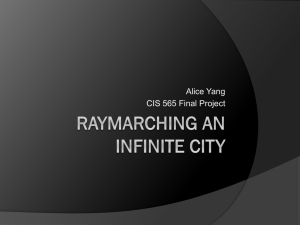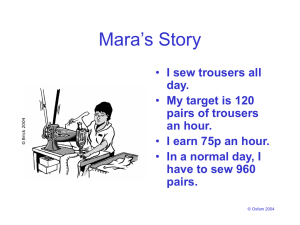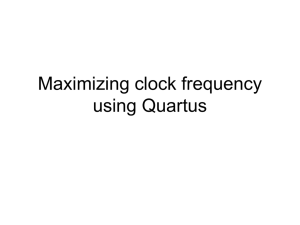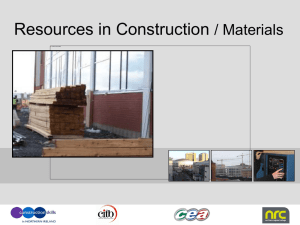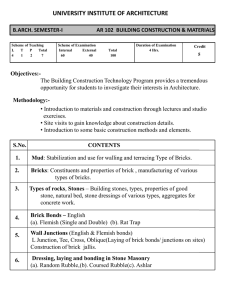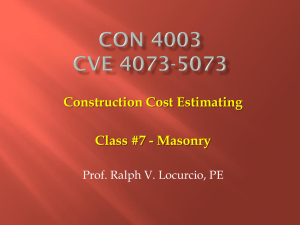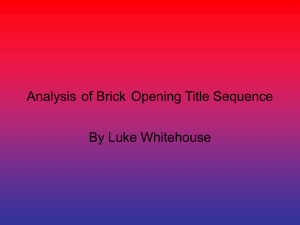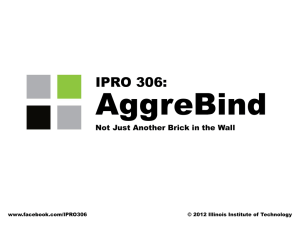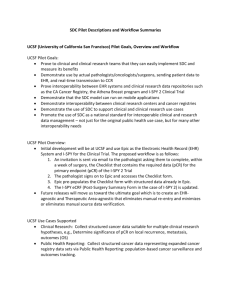Daniel Ziegerer - Cluster Conference
advertisement
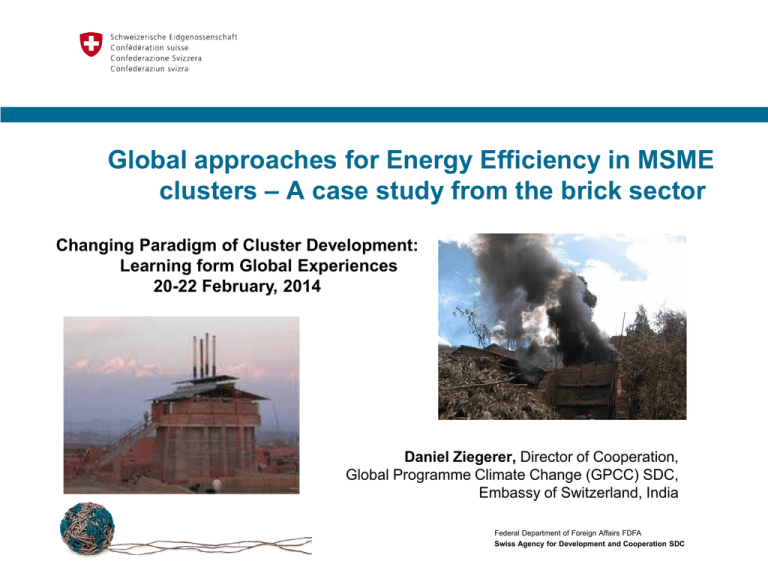
Global approaches for Energy Efficiency in MSME clusters – A case study from the brick sector Changing Paradigm of Cluster Development: Learning form Global Experiences 20-22 February, 2014 Daniel Ziegerer, Director of Cooperation, Global Programme Climate Change (GPCC) SDC, Embassy of Switzerland, India Federal Department of Foreign Affairs FDFA Swiss Agency for Development and Cooperation SDC Overview of brick sector intervention of SDC Global Environment Programme of the Swiss Agency for Development and Cooperation (SDC) initiated from a commitment made on the occasion of 700 years of Swiss Confederation in 1991. SDC India initiated an Action Research Programme to improve energy efficiency in select energy intensive small industry sectors. Brick production was identified as one of them. Over the last 20 years, brick initiatives supported in 17 countries on three continents. Shift from a technology driven towards a systemic approach of the sector. 2 SDC brick projects and programmes Vertical Shaft Brick Kiln (VSBK): • Asia: India, Nepal, Pakistan, Afghanistan, Vietnam • Africa: South Africa Improvement of existing, introduction of cleaner technologies: • Latin Amercia: Argentina, Bolivia, Brazil, Colombia, Ecuador, Mexico, Peru, Honduras, Nicaragua (EELA) • Africa: Burundi, Ruanda (new) 3 SDC‘s intervention strategy Technology and Know-How Transfer: Development and adoption of VSBK and other cleaner technologies for brick production with different fuels in different climatic conditions and with different ownership forms (informal & formal sector) Development and promotion of best practices (increased energy efficiency) in the existing firing technologies (e.g. introduction of fans) Establishment of baselines & monitoring systems for energy consumption and CO2 emissions Enabling environment: Development of emission norms with regulatory authorities; incentives for VSBK in government schemes and notifications. Setting up a partner networks and strengthening of technology and service providers to anchor and promote the technology 4 SDC‘s intervention strategy (contd.) Capacity building of partner agencies, entrepreneurs (business skills), workers (labour skills) and associations. Innovative strategies to improve living conditions of workers and their families Co-financing of pilot kilns and facilitating of access to finance (e.g. credit lines, CDM) Sharing of experiences with all stakeholder (Government, bilateral and multilateral agencies, NGOs, etc.) and South-South Knowledge Transfer to other countries (e.g. Nepal/India – RSA) 5 Sustainability Benefits Social Improved health and safety working conditions Increased sense of security Increased skill levels Increased remuneration potential Less staff turn over Environmental Reduced energy consumption Reduced GHG emissions – (VSBK: 50-60 %) Reduced PM and Black Carbon Economic Reduced energy costs Faster production -> faster return Improved labour efficiencies Improved quality of products -> higher sales prices Access to new market segments 6 Lessons learned: Challenges for promotion of cleaner brick production Enabling Environment: Lack of favourable policy environment (policies, rules and regulations) Lack of disincentives to stop the old technologies Administrative requirements for formalization, licensing, permits potentially pose traps for the technological change (e.g. EIA) Lack of enforcement of laws and regulations of local and national governments Socio-economic and institutional conditions: Structure of the brick sector (informal/formal, household/enterprise) Transformation from informal sector to formal sector. Change of habits (e.g. seasonal/all year round activity, 24/7 operation in VSBK) Finance: Lack of initial investment in a low margin industry (e.g. VSBK) Access to finance (e.g. credits, equity funds, carbon finance, etc.) Lack of economic incentives (e.g. tax reduction, recapitalization funds etc.) Perception of long payback period 7 Lessons learned: Challenges for promotion of cleaner brick production (contd.) Technology: Availability of fuel (e.g. VSBK operated by coal) Production capacity (e.g. manual brick making practices) Limited diversification of products (e.g. VSBK) Access to appropriate technology and services Availability of labour Environment: Look at the whole value chain (origin of fuel and clay, burning process, commercialization of bricks, construction) - Life Cycle Analysis Black carbon – Air Pollution nexus and impact on climate change Markets: Vulnerable to external shocks (e.g. financial crisis, crisis of construction sector, fuel prices) Lack of understanding of dynamics of the market (e.g. market segments, prices, etc.) 8 Potential for further scaling up: Climate and Clean Air Coalition (CCAC) Voluntary partnership uniting governments, intergovernmental and nongovernmental organizations and and the private sector in dealing with the collective challenge of Short-lived Climate Pollutants. (Secretariat: UNEP) One of the thematic initiatives focuses on Mitigating Black Carbon and Other Pollutants From Brick Production (Switzerland among lead countries) Objectives of the Brick Initiative: Raising political awareness Information sharing and knowledge transfer Market-based pilot projects Groundwork for moderanization of the brick kiln industry More information: www.unep.org/ccac 9 Contacts Switzerland: India: Reto Thönen Senior Expert Energy Daniel Ziegerer Director of Cooperation Swiss Agency for Development and Coopration (SDC) Global Programme Climate Change (GPCC) Swiss Agency for Development and Cooperation (SDC) Embassy of Switzerland Climate Change and Development Freiburgstrasse 130 CH-3003 Bern Switzerland Chandragupta Marg, Chanakyapuri, New Delhi – 110 021 India Tel.: +41 (0)31 324 73 61 Fax: +41 (0)31 325 93 62 Tel.: +91 11 4995 9670 Fax: +91 11 4995 9589 e-mail: reto.thoenen@eda.admin.ch e-mail: daniel.ziegerer@eda.admin.ch 10

